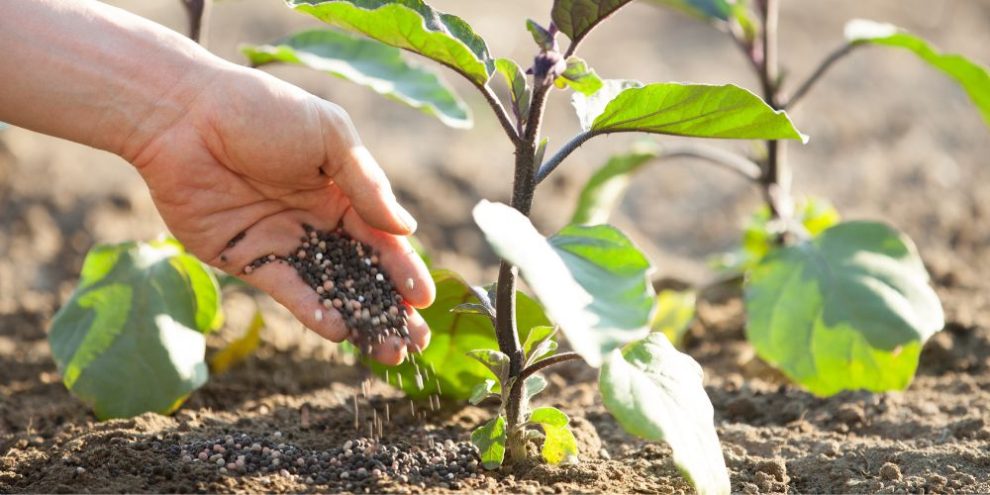
Spring has come, which means it’s time to get to work on your garden. Whether you’re working on adding some colourful flowers to your yard or growing your own vegetables, there’s plenty to think about - including your plants' nutrients. Lucky for you, we put together a list of five unique ways to do just that.
But first, let’s talk about some of the important nutrients your plants need to thrive …
The Nutrient Basics
New to gardening? No worries … let’s touch on the basics.
Plants need three vital nutrients that are in every fertiliser: nitrogen, phosphorus, and potassium.
What do they do? Nitrogen helps your plants grow, phosphorus helps your plants photosynthesize, and potassium helps with disease resistance.
When buying fertiliser, you’ll find these plant nutrients listed in a 0-0-0 format, which tells you the amount of each in an N,P,K order (nitrogen, phosphorus, potassium). As an example: If you buy a 50-pound bag and it has 10-10-10 on it, then it’s got 10% (5 pounds) of each core nutrient.
The rest of the bag is filler or inert ingredients, which help disperse the chemicals.
5 Unexpected Sources Of Plant Nutrients
So now that we understand the basics of fertiliser, let’s look at some unique sources of nutrients for your plants.
Keep in mind that these nutrient sources are not alternatives to store-bought fertiliser; they’re boosters that you can throw in if you don’t have any fertiliser on hand or want to give your plants something extra.
1. Coffee Grounds
Coffee is a good place to start! It’s a strong source of nitrogen for your plants and include traces of potassium. Coffee also contains calcium and magnesium, which is great for plant health.
Calcium strengthens plant cell walls. When plants are deficient in calcium, it causes distortions in new growths and leaves.
Magnesium carries phosphorus throughout the plant, improves root health, produces chlorophyll, and helps with photosynthesis. Low magnesium will cause stunted and overall poor plant growths.
If you do plan on using coffee, it’s important to dilute liquid coffee or opt for used coffee grounds. Coffee on its own is far too acidic even for acid-loving plants like blueberries. Adding in some ground up limestone to offset the acidity is recommended if the coffee is fresh.
To add coffee grounds to your soil, spread them thinly and sparingly. Coffee grounds compact very easily, which could restrict air flow. If you took a pH test and found out that your soil needs to be acidified, dig the used coffee grounds 7 - 8 inches into the soil.
2. Almonds
Nuts are not only great for your body, but also your plant's body.
With their high carbon content, they can strengthen your plants immune system to diseases like stem rot, root rot, and stem rust, as well as improve chlorophyll generation.
Almonds (and other nuts) contain lots of great minerals for your plants. Almond nuts have 150 mg of phosphorus, and their shells are made up of 4% nitrogen and 72% carbon, all which are great for plant health.
Since almonds have a high amount of phosphorus, your plants will grow much faster with them in your soil. Grind up the nuts you don’t plan on eating and sprinkle them into your soil. Over time, your nuts will start to mix with the soil, giving it a stronger structure.
RELATED: More tips on maintaining an outstanding garden year-round ...
3. Alfalfa, All the Time
Alfalfa meal is a bloom booster made from fermented alfalfa seeds, meaning that your colourful, decorative flowers will love this stuff.
It has a light, airy, and earthy appearance, and when you buy it in-store, you’ll notice they come in big quantities, because it’s hard to use more than your plants needs.
Not only does alfalfa meal have no smell, but it has a long history of being used for more than just plants, thanks to its superior contents of minerals, vitamins, and proteins. In its purest form, it’s also famous for being used as a medicinal herb.
The amount you need varies, but as a base, you’ll want about two cups (473mL) sprinkled around large blooming plants, like rose bushes. If your bloomer plants only bloom once a year, this is all you’ll need, near the start of spring. If your flowers like to show off throughout spring or summer, it’s recommended to do this once every 6 weeks. However, Alfalfa is an alkaline substance, so if your plants enjoy a more acidic soil, do not use this without re-balancing the pH levels.
4. Beans, Beans, Beans!
I’m going to keep this one short and sweet - plant beans. It’s that simple!
Beans are a great companion for plants like broccoli and cabbage because of its high nitrogen output. Beans take nitrogen in the air and turn it into nitrogen for the soil, like magic.
Soybeans are especially beneficial. They can add anywhere from 30 to 50 pounds of nitrogen per acre, decreasing the amount of money you’ll spend on fertiliser. This source of nitrogen increases your plants’ leafy green colour and helps with the photosynthesis process.
5. Avocado, Smavocado
If you have avocados lying around your house, they’re a great source of potassium, especially their pits. You can grind up avocado pits and use it as a potassium booster or as a mulch. Their high potassium content is especially great for your colourful and fruitful plants!
Grinding up an avocado pit sounds hard, because it is - if you don’t know what you’re doing. Avocado pits are surprisingly soft once they’re dried out, and can be easily cut with a kitchen knife once dried. The most common method for drying pits is to use the oven! Set the pit inside the oven for two hours at a temperature of 250℉ (121℃). After that, you can place it in any high powered blender and let it run it’s course for about 10-20 seconds. The result should be a nice powder.
After that, similar to coffee grounds, make sure to spread the powder out when you’re giving it to your garden. Once the powder gets damp again, it might clump together, causing restricted air flow.
All of these options are great for maintaining a healthy garden when used properly. With a diverse set of the main three nutrients your garden needs (as well as minor nutrients, healthy for every plant), you’re sure to have a great harvest this year. Just a reminder that these are not substitutes to actual fertilisers, just boosters in case your plants need it. Happy Farming!





